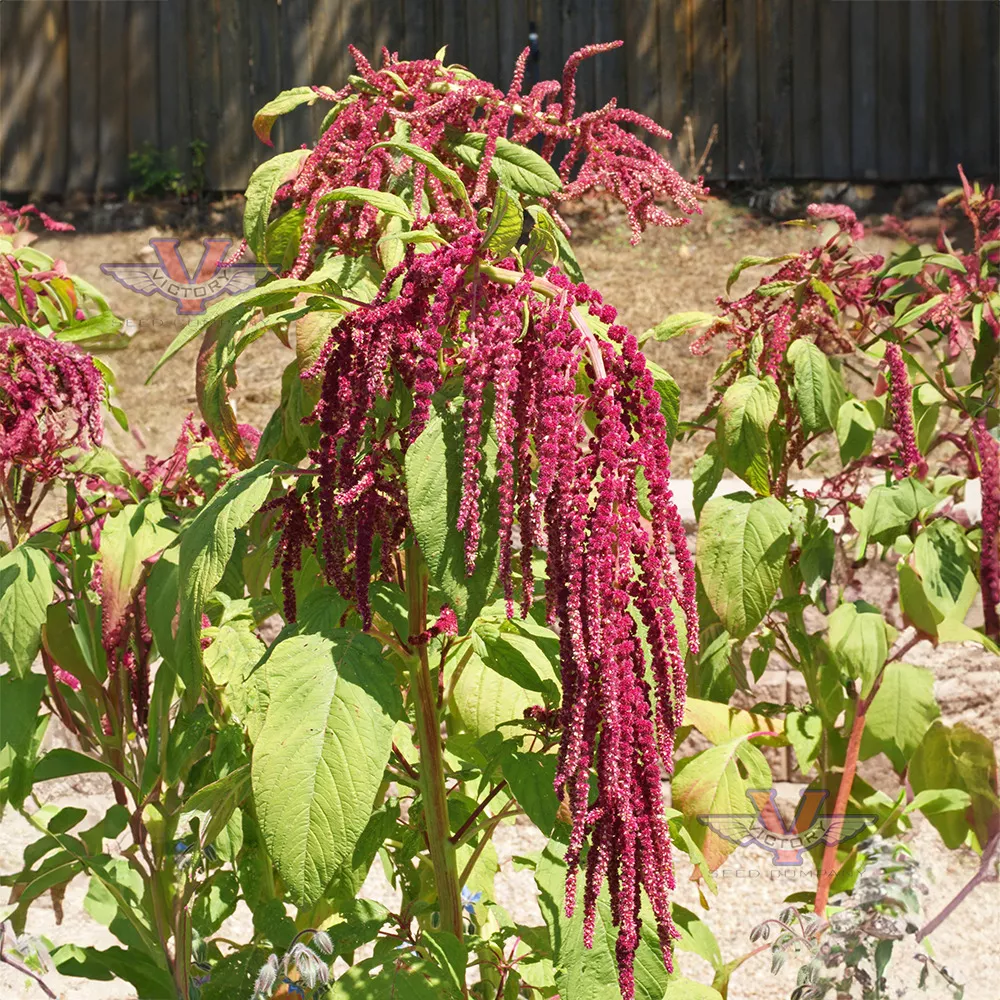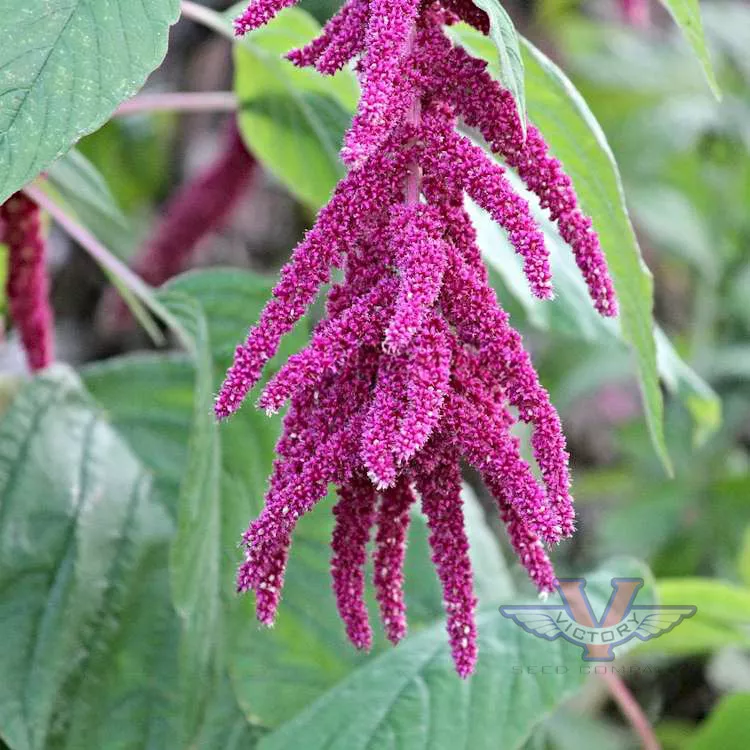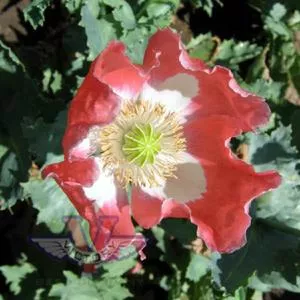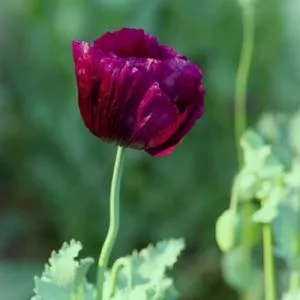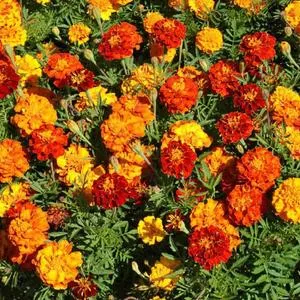

Love Lies Bleeding Amaranth
Amaranthus caudatus
Price: $3.45
SKU: 1001041Choose a variant:
90 to 120 days - Popular in Victorian-era gardens, if you are into edible, ornamental landscape choices, amaranth is a good one. The bright green color of the plants is dramatically contrasted by its dangling, flowing, fuchsia-red flower heads. They grow from three to over six feet high so plan your planting accordingly. They are as attractive as a cut flower, fresh or dried, as they are when on display on your garden.
Amaranth is generally sown as a summer annual, but if you live in areas that have cooler, shorter seasons, sow seeds indoors in the early spring and transplant outside after all danger of frost has passed. Choose a location that receives full sun and plant in the garden using a final spacing of fourteen inches. Seeds can take fourteen to twenty-one days to germinate at soil temperatures between 70 to 75ºF.
Harvested at 20 to 30 days, its young leaves are tender and mild and make a nice addition to a mixed greens salad. More mature leaves are used as a tasty cooked green and taste similar to spinach. Its seeds, as a "pseudo-grain," contain many amino acids and nutrients and can be eaten raw, sprouted, toasted, or ground into flour. Even if you don't harvest it, small migrating birds will be attracted to it in their fall travels and thank you for providing a meal.
Like quinoa, amaranth has a very long history as a South American food crop. Known as "kiwicha" in the Andes today, it was one of the Incas dietary staples. The Aztecs, and other peoples of what is now Mexico, used it in the preparation of various ritual food and drinks. One such recipe is made by toasting the seeds (like popping corn) and mixing them with honey or molasses. It is still available there as a treat called "alegria" which translates from Spanish to joy or cheer.
Amaranth is generally sown as a summer annual, but if you live in areas that have cooler, shorter seasons, sow seeds indoors in the early spring and transplant outside after all danger of frost has passed. Choose a location that receives full sun and plant in the garden using a final spacing of fourteen inches. Seeds can take fourteen to twenty-one days to germinate at soil temperatures between 70 to 75ºF.
Harvested at 20 to 30 days, its young leaves are tender and mild and make a nice addition to a mixed greens salad. More mature leaves are used as a tasty cooked green and taste similar to spinach. Its seeds, as a "pseudo-grain," contain many amino acids and nutrients and can be eaten raw, sprouted, toasted, or ground into flour. Even if you don't harvest it, small migrating birds will be attracted to it in their fall travels and thank you for providing a meal.
Like quinoa, amaranth has a very long history as a South American food crop. Known as "kiwicha" in the Andes today, it was one of the Incas dietary staples. The Aztecs, and other peoples of what is now Mexico, used it in the preparation of various ritual food and drinks. One such recipe is made by toasting the seeds (like popping corn) and mixing them with honey or molasses. It is still available there as a treat called "alegria" which translates from Spanish to joy or cheer.
Informational References:
- Amaranth - Thomas Jefferson Agricultural Institute.
- Grain Amaranth - University of Kentucky [PDF]
Customer Reviews:
Do you have experience with this one? 📝 📣 Write a review!
★★★★★ Great quality and HIGH germination rate
By Fallon Alvarez on September 10, 2019
By Fallon Alvarez on September 10, 2019
These were a bit slower to germinate than I expected, but once they popped up they continued to grow quite vigorously! I had to do quite a bit of thinning due to my overzealous/impatient planting, but thought of it as a great sign. Currently they are a sturdy 3-4 feet with brilliant foliage and rich pink-purple flowers. Ive collected over 15 leaves from the tallest plants and prepared them in a tofu scramble to create a fantastic meal.

